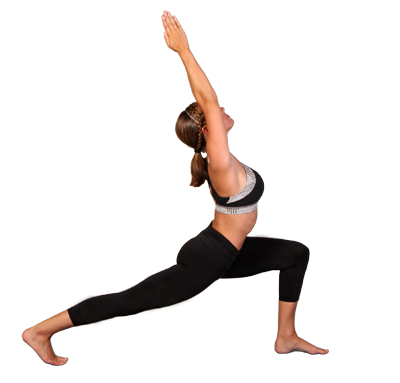Alexa Lane | Motivational Speaker and Author
Spirituality and Natural Healing
Mushroom-Bean Balls
Ingredients:
- 14-16 oz. white or Baby Bella mushrooms medium-fine chopped
- One medium red onion and 2 cloves garlic (optional) finely chopped
- One can (12-15 oz.) of either red kidney or garbanzo beans (experiment with different beans)
- 1 Tbsp. of miso paste (brown or red)
- 1 Tbsp. apple cider vinegar
- Vegetable stock
- 3 Tbsp. of nutritional yeast
- 1 Tbsp. tomato paste
- Half cup wheat gluten or brown rice flour ( gluten free)
- Spices (add what you like)- ½ tsp of: oregano, thyme, basil, red pepper , salt, black pepper
Combine mushrooms, onion/garlic, vinegar, nutritional yeast, miso, tomato paste, spices, and a few tablespoons stock in a non-stick (ceramic) pan. On medium-high heat, cook down stirring occasionally until mushrooms are reduced and onions become translucent. Set aside and allow mixture to cool for 15 minutes.
Drain can of beans and rinse with cold water. Combine in large bowl with ¼ cup vegetable stock. Hand mash and add cooled mixture and combine well. Add wheat gluten (or brown rice if you prefer gluten free) and fold in until combined (mixture firms up – try not to overmix).
Scoop with tablespoon and form into balls about 1.5 inches in diameter – makes about 20-22 balls. Place on parchment paper on baking sheet. Cook in 375 degree preheated oven for 18 minutes. Turn each ball on side and cook an additional 10 minutes. Turn once more and cook a final 10 minutes. Let sit 5 minutes before serving. You can combine with your favorite low/nonfat sauce.
Yoga for Osteoporosis

Osteoporosis is a disease that reduces bone mineral density. As bone becomes weakened and fragile, one can become susceptible to fractures. Men and woman begin bone loss after age 35, but post-menopausal woman are susceptible to accelerated bone loss due to hormonal changes. The areas that are commonly affected by osteoporosis are the spine, hips, and wrists. One of the best ways to guard against bone loss is by incorporating bone loading activity when you are young.
Fitness Routine:
Walk 30 minutes a day, 5 days a week and try this Bone Building Yoga sequence:
- Forearm plank
- High Lunge
- Tree
- High Lunge
- Standing Separate Leg Stretch ( with Chair for support if needed)
- Extended Side Angle
- Standing Hand to Big Toe pose
If you are diagnosed with Osteoporosis avoid:
- Full forward flexion/bending
- Spinal rotation or twists
- Plough Pose
- Full Back extension
HOW TO CREATE YOUR BEST ACTOR SELF–TAPE

Actor self-tape – Create your best impression
Congratulations! You have submitted yourself for a project or your agent did and the casting director is interested in meeting you! Your next step is to submit your actor self-tape! For the beginners out there, below are few ideas to improve your self-taped auditions.
Script analysis:
It’s important to know as much about your character and the plot. Thoroughly read the character breakdown and sides or full script if it’s available. Determine the arc of the story for your character and the arc of the individual scene. For shows that are currently airing, watch a few episodes to get a feel for the show. Once you have a better understanding of the project, refer to our blog on Script Analysis to further refine your choices.
If your scene includes speaking to multiple characters, make sure you have a specific place and eye line for each character.
Memorize your lines:
We realize sometimes you do not have enough time to memorize multiple pages, but if possible, try to be off book. Obviously, having your lines memorized allows you to be more relaxed and prepared.
Appearance:
Present yourself in the best possible way. In general, a natural makeup and hair look for woman. Yes, you guys may need a little foundation to even out your skin tone for the camera.
Of course, you want to look like the character you are auditioning for. This does not mean you need to dress in costume, but wear something that makes sense for the scene and gives the essence of the character.
Lighting:
Casting directors
need to see you clearly. A properly lit acting self-tape can also add to the
professionalism of the end product. In addition it conveys to the viewer a
sense that you are a serious actor committed to your craft. By going to a professional self-taping video
establishment you can benefit from multiple lighting sources which presents the
actor in an attractive three dimensional look.
If you choose to create your own acting self-tape at home you can purchase all-in-one lighting kits that, while not ideal, is a definite upgrade over general room lighting. Here is a link to B&H Photo, an excellent online photo and video resource, of a kit that includes a light, stand, cell phone holder and accessories for less than $70
Background:
Choose a solid color background. Grey looks great on all skin tones.
Stay away
from patterns as they are distracting and draw attention away from you.
If you are shooting at home you can also shoot against a plain painted wall.
You can also invest in inexpensive backdrops; either paper or fabric.
Sound:
Casting Directors also need to hear you. Similar to lighting, sound is equally important to the overall quality of your actor self-tape. Professional studios usually offer high end microphones placed on boom stands to ensure that your lines are clear and loud enough. A great vocal recording enhances the overall self-tape and will draw the viewer into your video and performance.
Creating a self-tape at home with a phone is a typical choice. If you have editing capabilities to improve the video quality and enhance the audio your end product can be quite adequate. Remember that audio coming from a cell phone can often be very low quality to the small, digital internal microphone. Another home option is to use a separate audio recorder placed alongside your phone/camera. You will need to import the separate audio with some editing software. Adobe Premiere Elements involves somewhat of a learning curve but is inexpensive and allows you to improve both the video and audio elements of your self-tape:
B&H Photo – Adobe Premier
B&H Photo – Zoom Recorder H4n
Doing self-tape production yourself is a definite option however it does involve an initial investment, learning curve, and will likely produce a good product but not to the level of a professional studio.
Slate
Slating is often uncomfortable. Try to think about it as if you are introducing yourself to a new person. Smile; say your name and any other details that were specified. Relax! Be pleasant! Be yourself!
We hope that helps!
Audition Preparation Tips

Audition Preparation and Script Analysis
Breaking down a script for a project or an audition can be a daunting task for beginners. It requires refining your acting technique in order to create realistic characters and to serve the story you are telling.
To get started, it’s a good idea to answer a few simple questions, listed below, that will help you discover the truth behind the words and create full, rich moments.
Truly knowing what your characters are talking about and why your characters need to do what they are doing will bring urgency, life, and reality to the scene. Each moment and choice must be specific. Give this process 100% of your energy and you will uncover clear and unique choices.
Once you have broken down your script and are ready to rehearse with other actors, be sure to stay present and open, moment by moment, and actively listen to the other actors. Truthfully connecting to other actors in the scene is the key to organic authentic human behavior.
Audition Preparation & Script Analysis I: Begin by answering these questions:
- Who – Who is the character? What are their beliefs, philosophy, and career? You are going to use your voice, body, and truth to discover and create each character you play.
- What – What is going on in the scene? What are the circumstances? What does your character want? What is your character doing?
- Where – Where is the scene taking place? Be very specific about the place that the scene occurs. What are your surroundings?
- When – When is the scene happening?
- Why – Why is your character performing the actions in the scene?
Audition Preparation & Script Analysis II: Add more specificity by integrating the following:
- Overall Objective/Needs/Desires– The overall objective has to do with what the character wants and needs in life. Their deepest desires.
- Scene Objective- The scene objective has to do with what the character wants in the scene.
- Actions/Intentions/Goals- The action steps the character takes to get what they want.
- Unit- A unit is a large segment of the script that may contain smaller “beats.” Units change when a major action happens in the story.
- Beat– A beat is a smaller action or thought that changes when new thoughts or actions arise.
- Emotional Life- The emotions the character feels throughout each scene.
- Moment Before– The events that just happened before the scene starts.
- Activities– Activities involve handling props or doing things like getting dressed, tying your shoes, eating, playing a game.
- Commit to Activities– You must really do any activity your character is engaged in.
- Present Moment Awareness– Always stay connected to the present moment. Truly listen “moment to moment.”
- Use all of your senses– Acting demands that you use your total body and senses to stay present. That means, see, feel, hear, smell, taste.
- Stay true and spontaneous– Acting requires the actor to be open to every emotion and feeling that spontaneously comes up in a scene. Be available to your acting partners.
- Obstacles– Internal and external blocks that get in the way of the character’s ability to accomplish their needs or desires.
- Back Story– The back story is the character’s personal history built by the key facts and phases in the script.
For tips on actor self-taping best practices see our recent Blog Post

